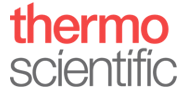QueChERS SPE in Food and Beverage Testing
Food testing is essential for identifying potential health risks and ensuring that foods and beverages meet regulatory requirements.
More than 1,000 pesticides and their metabolites, including over 100 chemical classes, may be used during food production or may also be present in the environment and foods we consume. Food testing laboratories routinely analyze large groups of samples to accurately measure a variety of parameters. Simple and robust analytical methods are important to help manufacturers overcome the challenges of compliance to a new and stricter regulatory environment.
Sample collection, transportation, and storage that avoids cross-contamination and the potential degradation of residues is vital. Sample preparation includes removing components that will not be included in the actual analysis, such as soil, stones, and bone fragments. QuEChERS (Quick, Easy, Cheap, Effective, Rugged and Safe) dispersive solid-phase extraction (SPE) is one of the most common techniques used in modern laboratories. It offers a convenient and effective method for sample extraction and cleanup for the multi-residue analysis of pesticides and herbicides in fruits, vegetables, and other complex products like meat and fish.
The QuEChERS method is a two-step process: extraction followed by clean-up. Three variations of the QuEChERS method are currently used:
- Original: The original QuEChERS method for non-base-sensitive compounds uses sodium chloride to enhance extraction.
- Dispersive: The AOAC 2007.01 method, Pesticide Residues in Foods by Acetonitrile Extraction and Partitioning with Magnesium Sulfate, uses sodium acetate instead of sodium chloride as a buffer and is compatible with base-sensitive compounds.
- European: Method EN15662 is similar to the AOAC method, but the extraction replaces the sodium acetate with sodium chloride, sodium citrate dihydrate, and disodium citrate sesquihydrate.
The salts and organic solvents in the extraction separate the analytes of interest from the food matrix. Thermo Scientific HyperSep Dispersive SPE (solid-phase extraction) products use magnesium sulfate to facilitate extraction, accompanied by either sodium chloride, sodium citrate, or anhydrous sodium acetate. The latter is preferred for folpet, captan, and other base-sensitive compounds. Available in a range of pre-prepared sorbent combinations, each HyperSep kit contains the specific sorbents to optimize the extraction. The organic layer is subjected to a cleanup that removes lipids, organic acids, and other interferences.
HyperSep Dispersive SPE Clean-Up products contain PSA (primary and secondary amine) to remove organic acids and polar pigments, among other compounds. Some products couple the PSA with end-capped C18 for the removal of most lipids and sterols, or GCB (graphitized carbon black) for the removal of sterols and pigments such as chlorophyll. These are also available with a range of pre-prepared sorbent combinations for optimum cleanup of the extracted analytes. When the extracted sample is “clean,” it can be analyzed by gas chromatography (GC) or liquid chromatography/mass spectrometry (LC/MS).
Troubleshooting QuEChERS methods:
| Problem | Causes | Recommended Solutions |
|---|---|---|
Loss of planar pesticides | Presence of GCB may result in a loss of planar compounds | Use a product with less GCB Use the Dual-Phase QuEChERS product |
Loss of acidic compounds (2,4-D) from starting matrix | Presence of PSA will extract acidic compounds from matrix | Use a product containing magnesium sulfate and C18 |
Loss of compounds during subsequent analysis | Some compounds are unstable and can break down during analysis | Use an analyte protectant like toluene or sorbitol |
Addition of sample to QuEChERS extraction tube containing sorbent causes an exothermic reaction | Exothermic reaction between water in sample and magnesium sulfate | Add the sample to the tube first, then the solvents, then the sorbent materials |
Poor recovery of pesticide compounds | Sample not in appropriate homogenization state | Wrong products used in method Ensure sample is hydrated to 80% or higher Verify nature of pesticides, e.g. are base-sensitive compounds present? |
LC/MS enables highly selective and sensitive quantification and confirmation of hundreds of target pesticides in a single run. However, the method requires extensive compound-dependent parameter optimization, and therefore cannot be used to screen for untargeted pesticides.
Using high-resolution accurate mass (HRAM) technology in full scan, MS/MS, or both, it is possible to address these and other challenges faced by pesticide residue testing laboratories. A full-scan HRAM approach coupled to ultra-high-pressure liquid chromatography (UHPLC) is ideal for rapid and sensitive screening and detection of targeted and non-targeted chromatography-amenable pesticide residues.
HPLC and UHPLC analytical columns provide solutions for challenging multi-residue pesticide analysis, and the columns of choice are standard C18 reversed-phase columns. When analyzing for polar analytes, as when using LC/MS for pesticide residues, use an aqueous C18 column, like the Thermo Scientific Accucore aQ.
Thermo Scientific separation and detection technologies provide solutions to help you meet these challenges and adapt to the ever-changing demands for analyzing new contaminants and components.

Content provided by:


